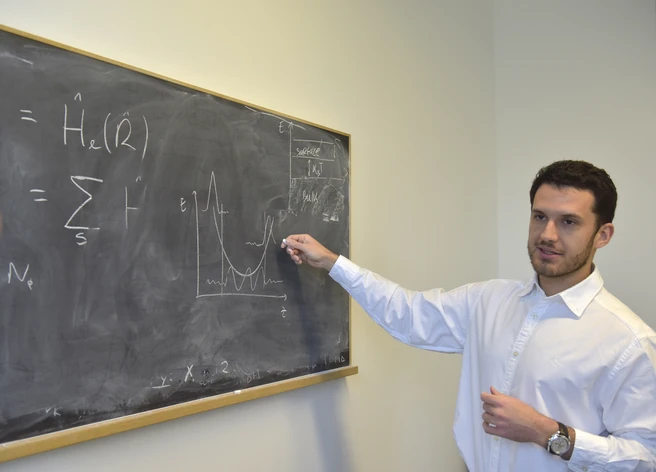How do halide perovskites manage to perform so well, even when their surfaces are full of broken bonds? To understand why perovskites are important to energy materials research, TUM Prof. David Egger explains, “Perovskites offer a unique combination of efficiency, flexibility, ease of fabrication, and versatile chemical tunability. They are considered one of the most promising future technologies in photovoltaics.”
In most semiconductors, breaking bonds at the surface creates “traps” — electronic defects that catch and immobilize charge carriers like electrons and holes. These traps can drastically reduce the efficiency of devices. That is why traditional materials like silicon require special chemical treatments, called passivation, to neutralize these defects.
But halide perovskites are different. Researchers from Technical University Munich’s School of Natural Sciences and the Weizmann Institute of Science (Israel) studying surfaces of a model halide perovskite found that, even with broken bonds and no passivation, the surfaces still behave like those of high-quality, well-treated semiconductors.
“This was a surprising result,” says Frederico Delgado, first author on the paper and doctoral student in Prof. Egger’s research group. He continues, “The surface atoms are constantly moving and should form defects, but the material still avoids forming the kind of deep, harmful traps we typically expect.”
Using advanced quantum-mechanical simulations, powered by machine learning, the team showed that the perovskite’s natural atomic motion actually helps prevent the formation of deep electronic states. In fact, about 70% of the surface electronic states are very close to the valence band edge, making them much less likely to act as traps. Occasionally, deeper states do form — but they are rare, not energetically isolated, and unlikely to cause trouble.
This research provides a microscopic explanation for one of perovskites’ most puzzling strengths: their ability to maintain excellent electronic quality without the need for chemical surface treatments.
The findings could accelerate the development of stable, high-efficiency perovskite devices for clean energy and next-generation electronics.
Publication
FP Delgado, F Simões, L Kronik, W Kaiser, DA Egger. Machine-Learning Force Fields Reveal Shallow Electronic States on Dynamic Halide Perovskite Surfaces. ACS Energy Letters. https://doi.org/10.1021/acsenergylett.5c01519
More information and links
The study appears in ACS Energy Letters. Funding was provided by the German Research Foundation (DFG) through the e-conversion Excellence Cluster and by TUM.solar as part of of the Bavarian Collaborative Research Project Solar Technologies Go Hybrid (SolTech).
- Prof. David Egger, Theory of Functional Energy Materials (TheoFEM)
- Atomistic Modeling Center (AMC)of the Munich Data Science Institute (MDSI)
Contact for this article
Prof. David Egger
Technical University Munich
Department of Physics
Chair of Theory of Functional Energy Materials (TheoFEM)
david.egger(at)tum.de
Press contact
communications(at)nat.tum.de
Team website
